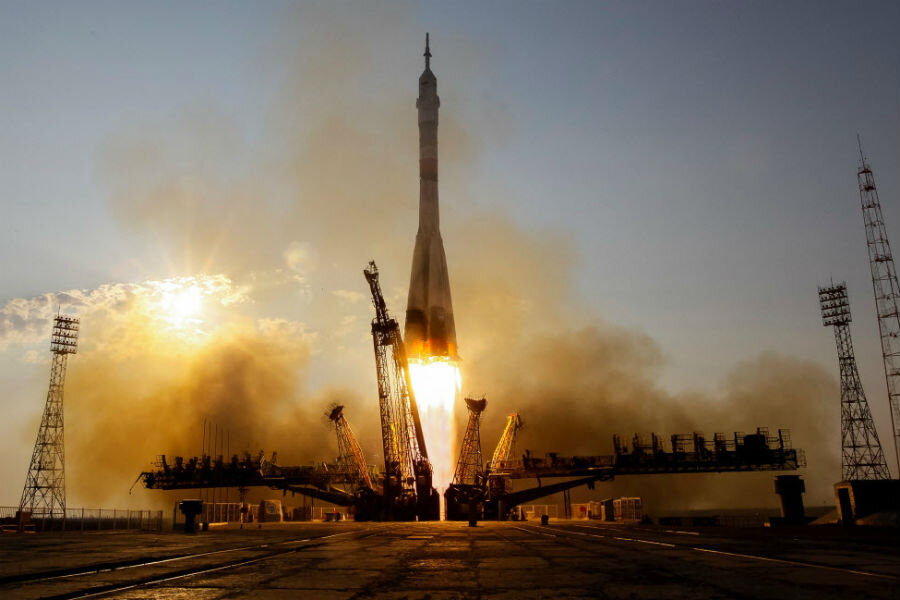Russia's newly improved rocket launches international crew into space
Loading...
An upgraded Russian spacecraft blasted off Wednesday evening on a two-day journey to the International Space Station.
The Soyuz capsule launched from Russia’s Baikonur Cosmodrome in Kazakhstan, the starting point of the world’s first satellite and the rocket that carried the first human into orbit during the space race.
Unlike the visionary Soviet program before it, the Russian space program has been criticized for lacking ambition, and although the recent launch is far from a global first, it’s being viewed as a solid step forward for collaborative space exploration befitting the historic launch point.
Russian cosmonaut Anatoly Ivanishin, and first-time astronauts Kathleen Rubins of NASA and Takuya Onishi of the Japanese space agency JAXA will orbit the Earth 34 times, extending the typical 6-hour journey to the ISS in order to test out the ship’s new features. And the crew is expected to run over 250 science experiments onboard the ISS before returning home in October, including the first-ever DNA sequencing in space.
"All is well on board!" said mission control in comments relayed by NASA TV, which broadcast footage of the launch. The spacecraft entered orbit about 10 minutes after liftoff following a smooth launch.
The crew will test the upgraded systems on their Soyuz MS-01 spacecraft, including new thrusters that are fully redundant, new electrical motors for the Soyuz docking probe, additional micrometeoroid debris shielding, and more cells on the craft’s solar panels.
An improved video and communication system will make it easier to navigate the ship, particularly when docking at the space station and a new satellite navigation system will better allow mission control to calculate Soyuz’s position in space.
This is the first of at least two missions in which enhanced Soyuz hardware will be tested and verified, according to NASA.
Russia is one of only two nations capable of sending humans into space. Russia hasn’t lost crew members since Soyuz 11 in 1971, but will likely lose its monopoly on transporting astronauts to the space station, when Boeing and SpaceX could jump into the market as soon as 2017. Each will be capable of two crew launches to the space station per year.
In another instance of international collaboration – despite geopolitical tensions between Russia and the West – the joint European-Russian ExoMars mission launched successfully in March. The Russian Federal Space Agency (Roscosmos) provided the launch vehicle, a Proton rocket, for the Exomars Trace Gas Orbiter, which will hunt for possible signs of life using four scientific instruments. The orbiter and a lander known as Schiaparelli should arrive at Mars in October where they’ll search for evidence of atmospheric gases that could point to active biological processes.








